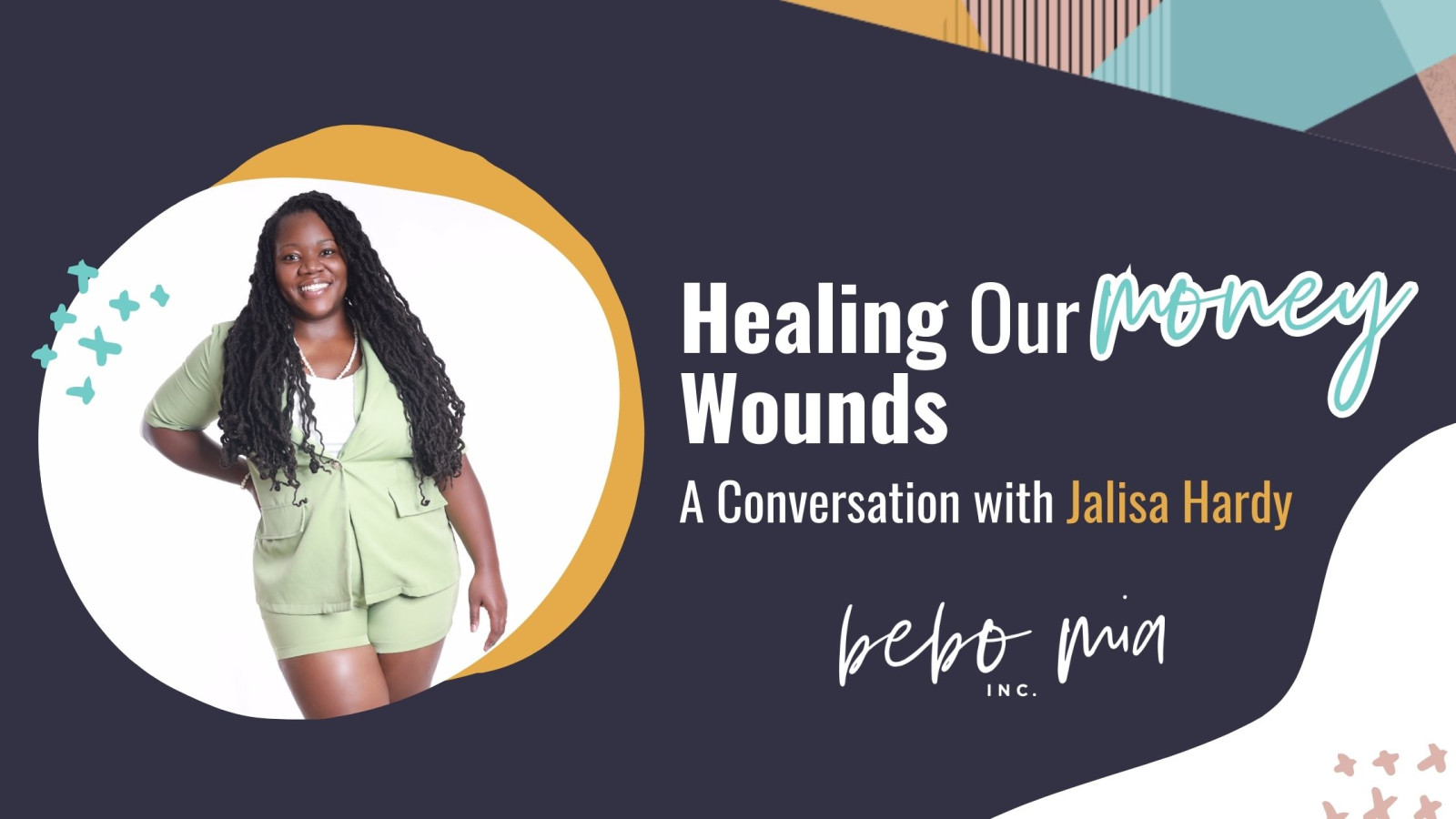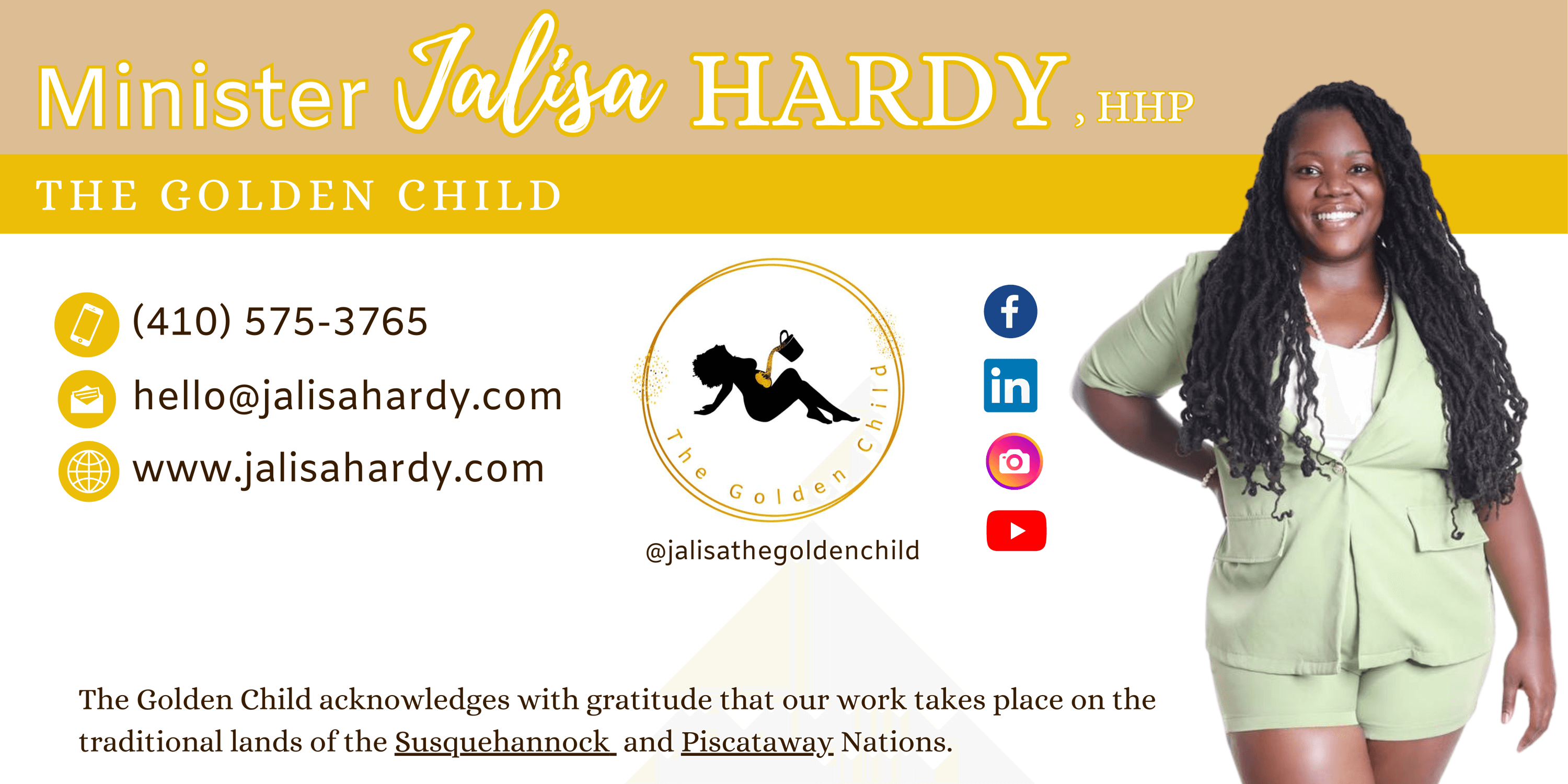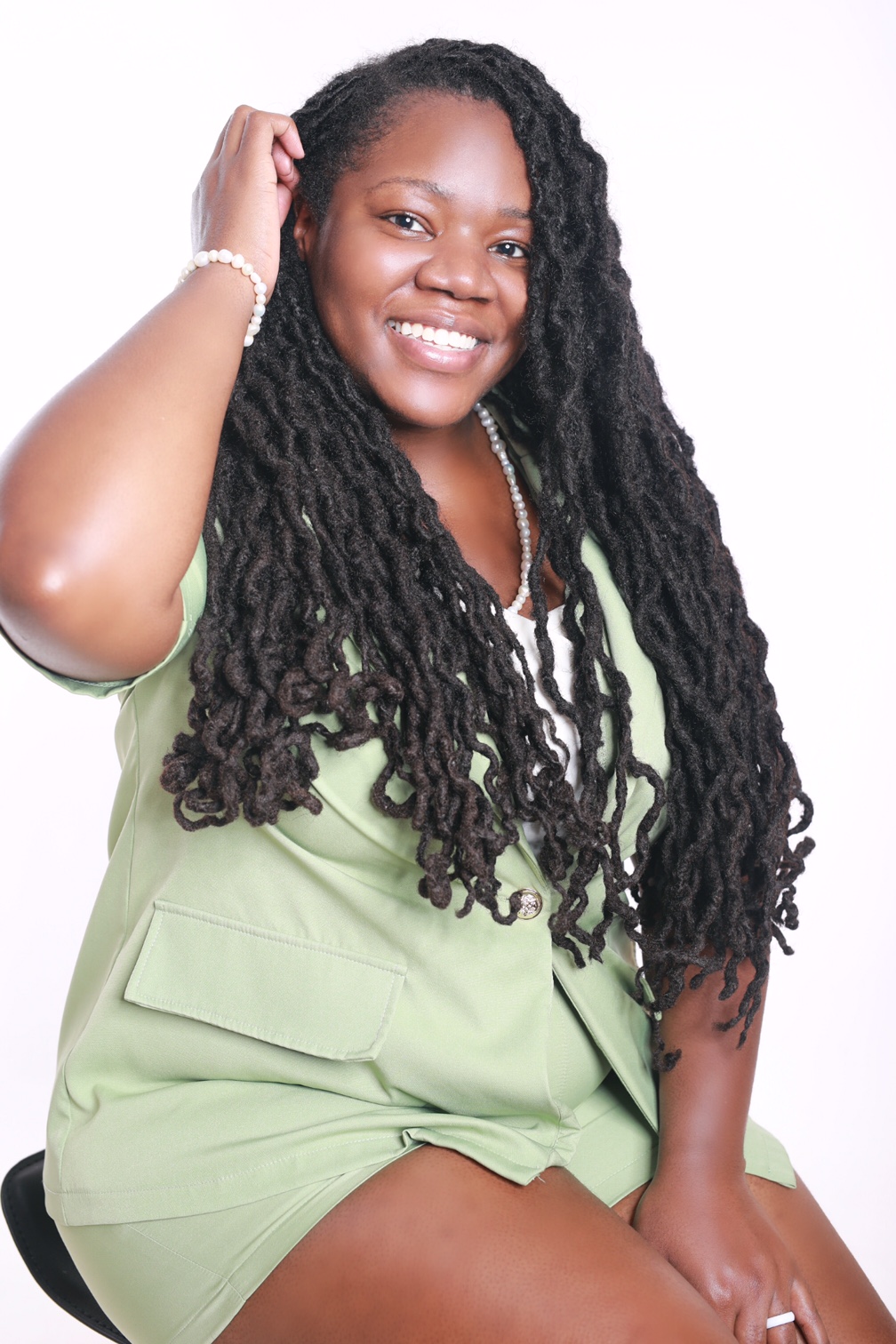
Have you ever walked out of a prenatal visit feeling confused, dismissed, or unsure of your next step?
You’re not alone—and it doesn’t have to be that way.
It’s one thing to prepare your nursery, pack your hospital bag, and visualize the moment you meet your baby. But one of the most powerful ways you can prepare for birth is by learning to advocate for yourself—especially in medical spaces.
Whether you’re navigating a routine pregnancy or facing high-risk challenges, your voice matters. You deserve to be heard, understood, and involved in every decision about your body and your baby.
As a doula, I work closely with expecting moms to make sure they feel confident, educated, and supported when interacting with their healthcare providers.
As a doula, I work closely with expecting moms to make sure they feel confident, educated, and supported when interacting with their healthcare providers.
🗣️ How to Advocate During Prenatal Visits
- Come with questions: Write them down so you don’t forget anything important.
- Take notes: Bring a notebook or use your phone to jot down key information.
- Ask for clarity: Try, “Can you explain that in simpler terms?” or “What are my other options?”
- Bring support: A partner, friend, or doula can help you feel empowered and focused.
🔎 Key Questions to Ask If You Have a High-Risk Pregnancy
- What specifically makes my pregnancy high-risk?
- How often will I need monitoring?
- What are the risks of induction or early delivery?
- Are there specialists I should be referred to?
- How can I manage stress or anxiety during this time?
Remember: your concerns, emotions, and instincts are valid. Never let a label take away your power.
🚩 What to Do If You Feel Dismissed by Your Doctor
- Speak up calmly and directly: “I don’t feel like my concerns are being taken seriously.”
- Ask for a second opinion: It’s your right.
- Document the conversation: Keep a record.
- Lean on your doula: We’re here to guide and support you through it all.
💛 You Deserve to Be Heard
Advocating for yourself isn’t confrontational—it’s necessary. You’re not just doing it for you; you’re doing it for your baby and your peace.
✨ Need one-on-one support?
Schedule your Empowered Birth Consultation Call and we’ll walk through your birth plan, prep your questions, and build a confident strategy together. You don’t have to figure this out alone.
✨ Let’s co-create your sacred birth experience — your way.
Browse packages and find the support that fits your needs here:
Schedule your Empowered Birth Consultation Call and we’ll walk through your birth plan, prep your questions, and build a confident strategy together. You don’t have to figure this out alone.
✨ Let’s co-create your sacred birth experience — your way.
Browse packages and find the support that fits your needs here:
👉 https://jalisahardy.com/page/product-service-page-doula
When you book any doula package before December 25, you'll receive a complimentary a la carte service (up to $222 value) — completely FREE.
When you book any doula package before December 25, you'll receive a complimentary a la carte service (up to $222 value) — completely FREE.
✨ This is your time to feel fully supported, empowered, and nurtured as you prepare for your birth journey.
Don’t wait — secure your spot and enjoy this beautiful bonus!
Let’s make sure your voice leads your birth story—not fear.

Hey Golden Child!
Happy December! Can you believe it’s December already? This year has flown by for me!
As I sit here on this cool December evening, reflecting on 2025, I'm struck by how dramatically my approach to life has transformed over the past few years. Two powerful frameworks have converged in my journey: the principles from Designing Your Life by Bill Burnett and Dave Evans, and the profound insights of Human Design—which I've woven into my daily existence since 2022. (Get your free Human Design Chart from my website www.jalisahardy.com.) Today, I want to share how these approaches have helped me navigate challenging health issues, make authentic decisions, and design a life that truly resonates with who I am.
When Design Thinking Meets Your Design
When I first encountered Designing Your Life, I was already deep in my Human Design journey. What fascinated me was how perfectly these systems complement each other. While Human Design reveals who you are at your core—your energy type, strategy, and authority—Burnett and Evans' framework provides the process to build a life that honors that authentic self.
The five principles from Designing Your Life became my foundation:
- Curiosity: Instead of asking "What's wrong with me?" when my blood pressure spiked, I asked "What is my body communicating?"
- Bias to action: Rather than accepting my doctor's fear-based recommendations at face value, I prototyped different approaches aligned with my Human Design profile
- Reframe problems: Viewing high blood pressure not as a crisis but as valuable feedback from my body
- Awareness: Recognizing when I was operating against my Human Design strategy (as a Manifesting Generator, I've learned to respond, not initiate)
- Radical collaboration: Seeking support from those who understand both design thinking and Human Design
The Power of Coherency
One of the most transformative concepts from Designing Your Life is the idea of coherency—the alignment between who you are, what you believe, and what you're doing.
When my doctor pressured me to take medication immediately for my blood pressure, my Human Design knowledge helped me recognize this wasn't aligned with my strategy. As someone with a Sacral authority, I knew I needed to wait for my gut response. Through journaling (a key practice from Burnett and Evans), I clarified my workview and lifeview:
- Workview: I believe work should energize me, not deplete me
- Lifeview: I honor my body's wisdom and trust its signals
When these views clashed with the medical advice I was receiving, I didn't panic. Instead, I prototyped alternative approaches: breathwork aligned with my energy type, specific movement patterns, and dietary adjustments that honored my unique biology. Within weeks, my blood pressure decreased—without medication.
This experience taught me that authentic living isn't about rejecting external advice, but about designing solutions that resonate with your true nature.
Your Year-End Reflection: Designing What's Next
As we approach the end of 2025, I invite you to reflect on your journey through the lens of life design:
The Life Design Assessment
Rate these areas of your life from 0 to FULL (like a fuel gauge):
Life Area | Current Rating | What's Working | What Needs Designing |
Health | |||
Work | |||
Play | |||
Love |
New Way to Support the Mission of The Golden Child
My journey toward authentic living has led me to create The Golden Child—a space where people discover their true design and learn to live accordingly. But to fully serve this mission, I need to address my own financial design.
This is where Jubilant Money enters the picture—a revolutionary platform that connects purpose-driven individuals with anonymous donors who believe in their mission. Through Jubilant Money, I have the opportunity to become financially free by paying off my debt with community support. So far, I've paid off one credit card and reduced the interest on another to 0% working with Jubilant Money and Women's Money Matters.
Unlike traditional crowdfunding, Jubilant Money creates a sacred container where donors give anonymously, free from expectation, and recipients receive without obligation—only gratitude. This aligns perfectly with my Human Design strategy of responding rather than initiating.
By supporting my journey, you're not just helping me pay off debt—you're investing in:
- Creating more free content about Human Design and life design
- Developing resources specifically for parents navigating their children's Human Design
- Building a community where people can live authentically without financial stress
Let’s Design Your Most Authentic Life Together (With 44% Off!)
This December, I'm offering something special—not as a Black Friday gimmick, but as a genuine invitation to begin designing your most authentic life.
For the entire month of December, you can book a Self-Discovery & Alignment Session at 44% off with code DESIGN44.
This isn't about following someone else's blueprint—it's about discovering your unique design (both Human Design and life design) and creating a path that works for you, not for societal expectations, family conditioning, or external pressures.
In our session, we'll:
- Clarify your Human Design profile and how it informs your life decisions
- Apply design thinking principles to your current challenges
- Prototype small experiments to test what truly resonates with your authentic self
- Create a compass (workview + lifeview) to guide your decisions
This is how I moved through my health challenges—not with fear, but with design, not with compliance, but with conscious choice.
As Burnett and Evans remind us: "The life that you are living is just one of many possible lives." This December, let's design the one that's most authentically yours.
With gratitude and design,
Jalisa The Golden Child
P.S. Remember—this isn't a limited-time sales tactic. The 44% discount runs all of December because authentic design takes time. True transformation happens when we move at our own rhythm, honoring our unique design. Use code DESIGN44 at checkout.

“Your voice is powerful—especially when the system tries to silence it.🎙️✨ Learn how to advocate for your birth, protect your peace, and recognize the signs of racial bias before it shows up.”
Let’s talk about what’s really happening behind the curtain in maternal healthcare—because your safety, dignity, and birth experience matter.
Racial bias in healthcare is not new, but the consequences for birthing people—especially Black mothers—are far too common and far too devastating. Even with similar income, education, or access to care, Black women are more likely to be ignored, dismissed, or misdiagnosed in medical settings.
As a doula and advocate, I believe in naming these injustices, equipping you with tools, and helping you reclaim your power in a system that wasn’t built for us.
Here You’ll Learn:
1. 💔 What Racial Bias Looks Like in Birth Spaces
- Not being believed when you express pain
- Dismissal of questions or concerns
- Lack of informed consent before procedures
- Unequal treatment based on assumptions about your background, insurance, or family structure
“They didn’t believe me when I said I was in pain—until it was too late.” This isn’t just a story. It’s a systemic issue.
2. 🛑 How to Recognize Red Flags Early
- Providers who interrupt or talk over you
- Staff who avoid answering direct questions
- Inconsistent care or vague treatment plans
- Being pressured into decisions you don’t understand
Knowing the signs allows you to respond—not just react.
3. 🛡️ Your Rights in the Delivery Room
You have the right to:
- Ask questions—and get clear answers
- Refuse procedures or ask for more information
- Request a new nurse or provider if you feel unsafe
- Have a support person or doula present at all times
Knowledge is your power. Confidence is your protection.
4. 🧘🏽♀️ How to Prepare Yourself & Your Support Team
- Birth Advocacy Scripts – Learn how to say: “I need a moment to think about this,” or “Can you explain why this is necessary?”
- Choose a culturally competent care team
- Hold a pre-birth meeting with your doula or birth partner to review your wishes, values, and rights
- Practice assertive communication in case your birth space turns challenging
5. 🤝 Why You Deserve Culturally Competent, Respectful Care
Your birth story should be one of strength—not survival. You deserve to be seen, heard, and honored throughout this sacred process.
💛 Final Thoughts:
No one should have to “prepare for racism” during childbirth—but we can prepare to rise above it with knowledge, community, and strategy. Combating racial bias begins with awareness, but real change happens when you’re equipped with tools to advocate for yourself and others.
✨ Want to Prepare with a Sisterhood That Sees You?
You don’t have to do this alone. Come be part of a powerful, healing space created just for you.
🤎 Join the Empowered Birth Tribe on Meetup — a free monthly support group for melanated mamas to connect, share, and rise together.
Let’s grow in community, advocate with confidence, and birth in power.

Hey Golden Child!
As we navigate life's twists and turns, it's essential to understand the intricacies of our emotions and their impact on our well-being. Today, I want to share my personal journey with high blood pressure and how I've come to realize the profound connection between emotions and physical health. By exploring the emotions wheel, emotions in our organs, emotions vs. feelings, and emotional and non-emotional energy types in Human Design, I've gained a deeper understanding of the root of all emotions: fear and love.
My Journey with High Blood Pressure
Over the past five months, I've been working to manage high blood pressure naturally, despite the initial skepticism from my doctor. I've been using supplements like magnesium, beet root, celery seed extract, and black seed oil, in addition to regular workouts, hypnotherapy, and Emotional Freedom Technique (EFT)/Tapping. While natural remedies take time to show their effects, I've been committed to this journey, even in the face of uncertainty.
One of the most significant breakthroughs came during a tapping meditation, where I learned from Louise Hay that an underlying cause of high blood pressure is "longstanding emotional problems not solved." This realization sparked a deep emotional release, as I confronted unresolved experiences from my past and present. I had been unwilling to accept my reality, feeling like I was doing everything "right" yet still facing this challenge. However, I've come to understand that healing is not a linear process, and just because we have healthy habits, it doesn't mean we'll always have the desired outcomes.
The Emotions Wheel and Understanding Emotions
The emotions wheel is a powerful tool for understanding the interconnectedness of our emotions. By recognizing the different emotions and their relationships, we can begin to address the root causes of our emotional pain. I've come to realize that emotions are energy in motion, and by acknowledging and releasing them, we can restore balance to our bodies and minds.
Emotions in Our Organs
In traditional Chinese medicine, each organ is associated with specific emotions. For example, the heart is linked to joy and love, while the liver is connected to anger and frustration. By understanding these connections, we can better navigate our emotional experiences and address any imbalances in our bodies.
Emotions vs. Feelings
Emotions and feelings are often used interchangeably, but they have distinct meanings. Emotions are intense, short-term experiences, while feelings are longer-term, more subtle sensations. By recognizing the difference, we can better navigate our emotional landscapes and respond to challenging situations.
Emotional and Non-Emotional Energy Types in Human Design
In Human Design, there are two primary energy types: emotional and non-emotional. Emotional energy types are deeply connected to their emotions because they are internally generated, while non-emotional energy types are more detached because they are heavily influenced by the emotions of those around them. By understanding our energy type, we can better navigate our emotional experiences and respond to challenging situations. If you're interested in learning whether you're an emotional or non-emotional energy type, go to my website www.jalisahardy.com to get your Human Design Chart for free.
The Root of All Emotions: Fear and Love
At the core of all emotions lies fear and love. Fear is the root of many negative emotions, while love is the foundation of positive emotions. By acknowledging and addressing our deep-seated fears and cultivating love and compassion, we can transform our emotional experiences and restore balance to our bodies and minds.
Practical Tips for Emotional Healing
- Practice self-awareness: Recognize your emotions and their impact on your body and mind.
- Use energetic practices: Engage in practices like meditation, yoga, or sound healing to shift your energy and perspective.
- Address emotional blockages: Use techniques like EFT/Tapping or journaling to release emotional pain and restore balance.
- Cultivate love and compassion: Focus on cultivating love and compassion for yourself and others, and acknowledge the interconnectedness of all emotions.
As I continue on my journey with high blood pressure, I'm reminded that healing is not just about physical health, but also about emotional well-being. By understanding the intricacies of emotions and their impact on our bodies, we can take the first steps towards transformative healing. Suppose you're ready to dive deeper into your emotional journey and explore the connections between emotions and physical health. In that case, I invite you to book a Self-Discovery & Alignment Call with me. Together, we can explore your unique challenges and empower you to transform them into stepping stones toward your best self.
Visit this link to schedule your session: Self-Discovery & Alignment Call and use the code DISCOVER22 to receive 22% off your session.
Wishing you resilience, growth, and emotional healing as you navigate your journey!

🧘🏽♀️ How are you really preparing for birth?
It’s one thing to pack a hospital bag or attend a birthing class—but preparing your spirit is something else entirely. Birth is a sacred rite of passage. It requires more than physical readiness; it asks you to go inward, to connect with your power, and to release fear so you can welcome your baby from a place of peace, strength, and alignment.
As a doula, I support clients in nurturing their whole selves—body, mind, and soul—because you’re not just birthing a baby… you’re birthing a new you.
1. How to Spiritually Ground Before Labor
Here are gentle but powerful ways to connect to your core:
- Daily Quiet Time – Begin or end your day with a few minutes of silence. Journal, pray, or sit in gratitude. Ask, “What does my body need today?”
- Rooting Practices – Walk barefoot on the earth, sit near trees, or place your hands over your womb and breathe deeply.
- Energy Clearing – Smudge your space with sage or palo santo, use essential oils like lavender or frankincense, or take a cleansing bath with sea salt.
2. Affirmations + Meditations I Share with My Clients
Simple affirmations spoken daily can shift your mindset and energy:
- “My body was made for this.”
- “I release fear and trust the process.”
- “My baby and I are working together in harmony.”
✨ Try this 5-minute womb connection meditation:
Sit comfortably, close your eyes, place your hands on your belly, and repeat: “I am safe. I am strong. I am ready.” Visualize golden light surrounding you and your baby.
Sit comfortably, close your eyes, place your hands on your belly, and repeat: “I am safe. I am strong. I am ready.” Visualize golden light surrounding you and your baby.
3. What to Do When Fear or Anxiety Shows Up
Fear is a natural part of this journey, but it doesn’t have to control you. Here’s how to move through it:
- Name It – Say what you're feeling out loud or journal it. Naming the fear reduces its power.
- Talk to Your Baby – Speak words of love and confidence. This builds trust and connection.
- Create a Ritual – Light a candle, play music, or say a prayer whenever anxiety rises. This signals your brain that you're safe and supported
4. Spiritual Birth Prep Ideas
- Create a birth altar with meaningful objects: crystals, scripture cards, ultrasound photos, or letters to your baby.
- Write a birth vision prayer or letter declaring how you want to feel during birth.
- Set up a “labor playlist” with songs that make you feel empowered, relaxed, or joyful
💛 Final Thoughts
Birth is more than a medical event—it’s a spiritual transformation. When you take time to prepare your spirit, you birth with more clarity, confidence, and connection.
Whether this is your first baby or your fourth, you deserve to feel deeply supported, emotionally grounded, and spiritually aligned.
And if you're ready for real support, let’s talk about how I can walk this journey with you as your doula. I offer two ways to connect:
Share with a friend and you’ll receive $100 OFF any of our three doula packages when they book.
Plus, your friend (the new client) will receive a FREE a la carte session to support their journey!
🤝 It’s a win-win — support a mama-to-be and receive a thank-you gift in return.
Tag, text, or forward this now and let’s create empowered birth experiences together.
Your birth, your body, your power. Let’s make it sacred, supported, and stress-free.







